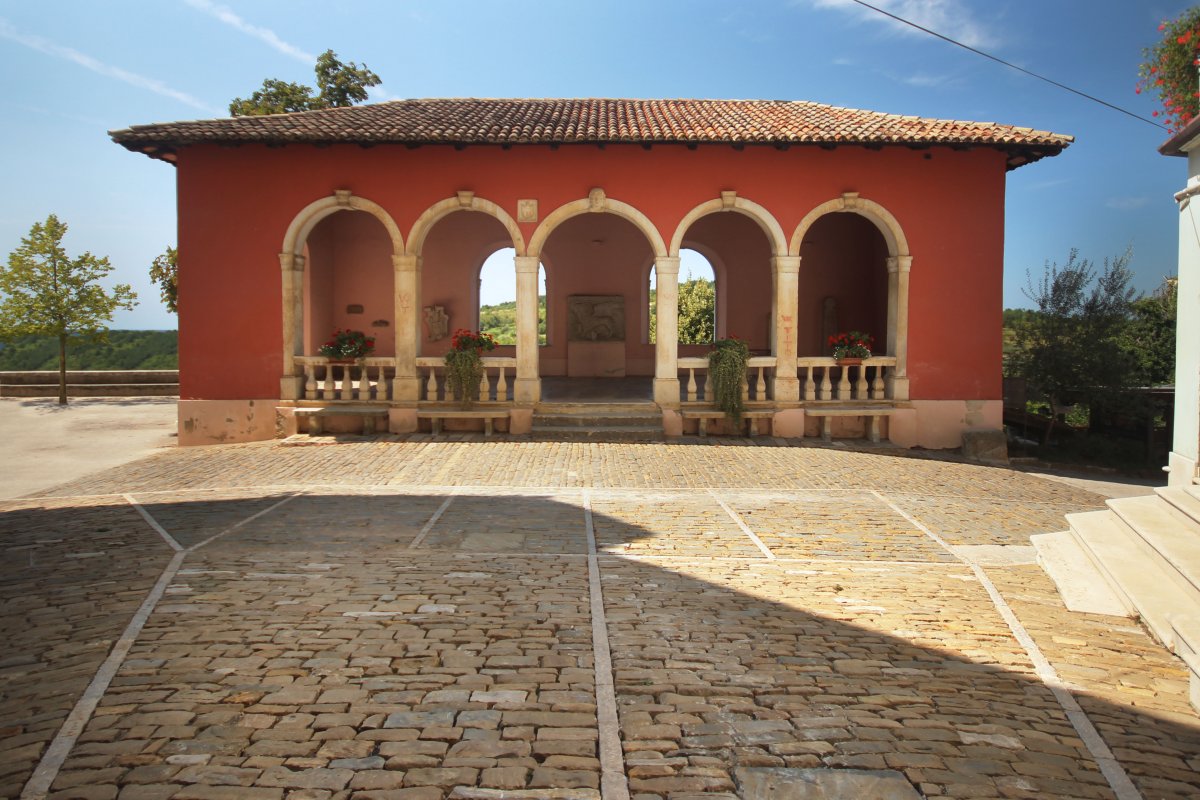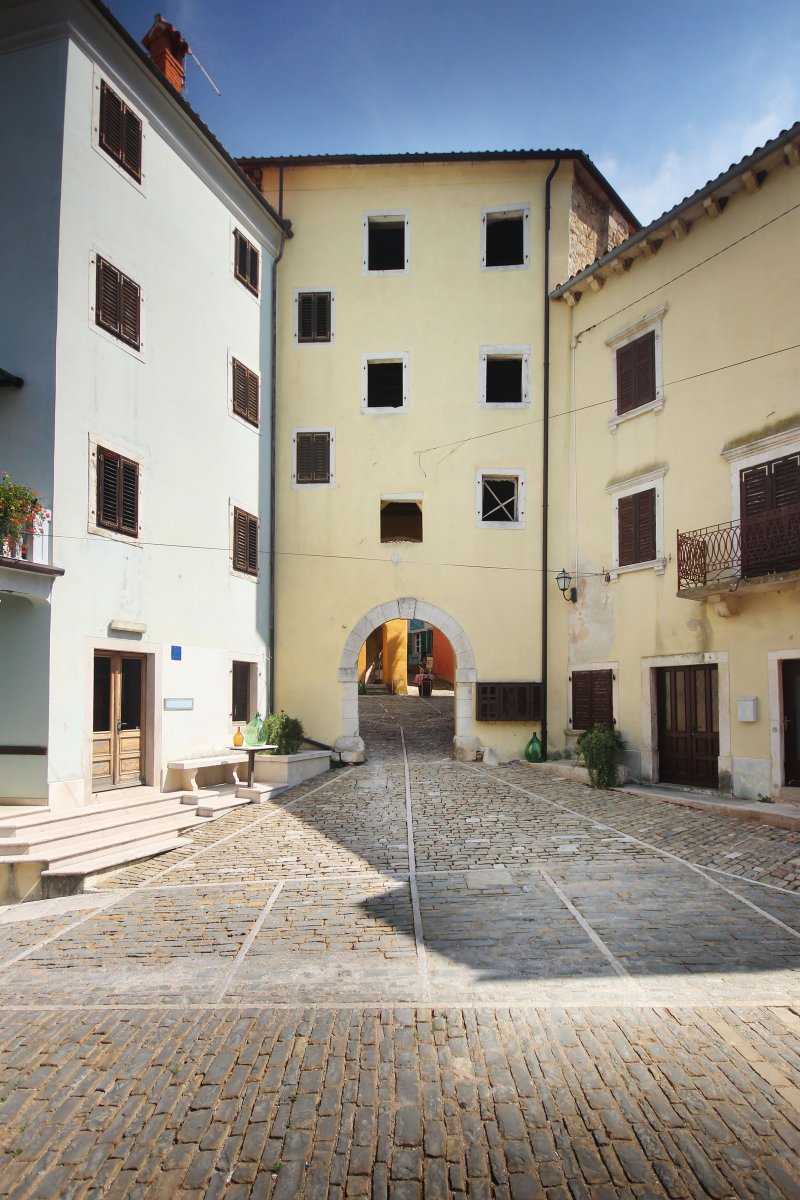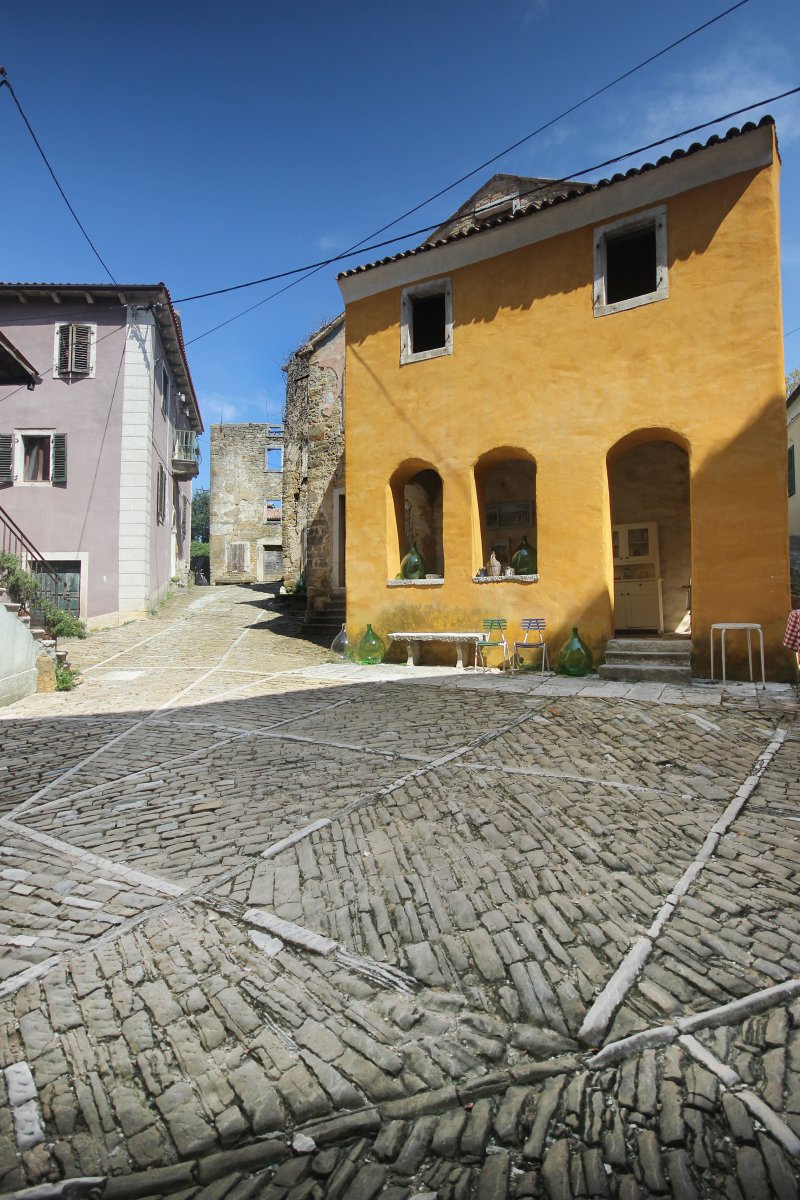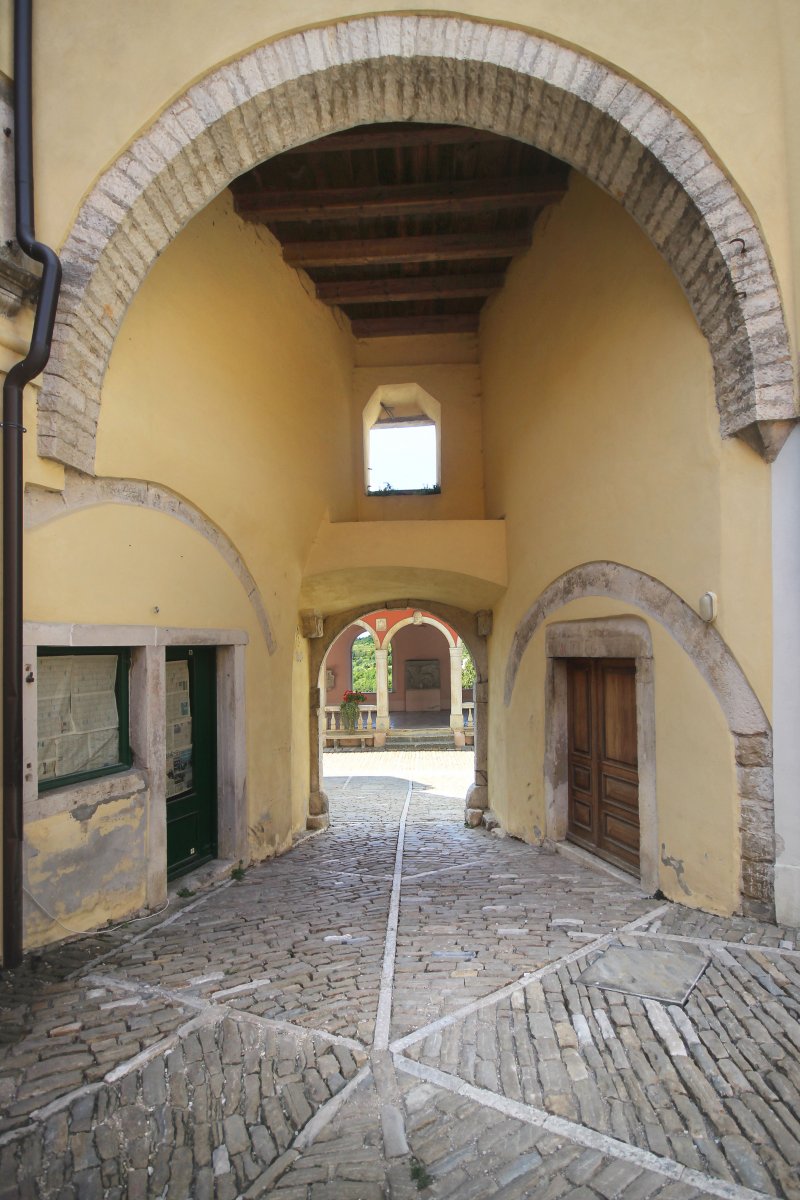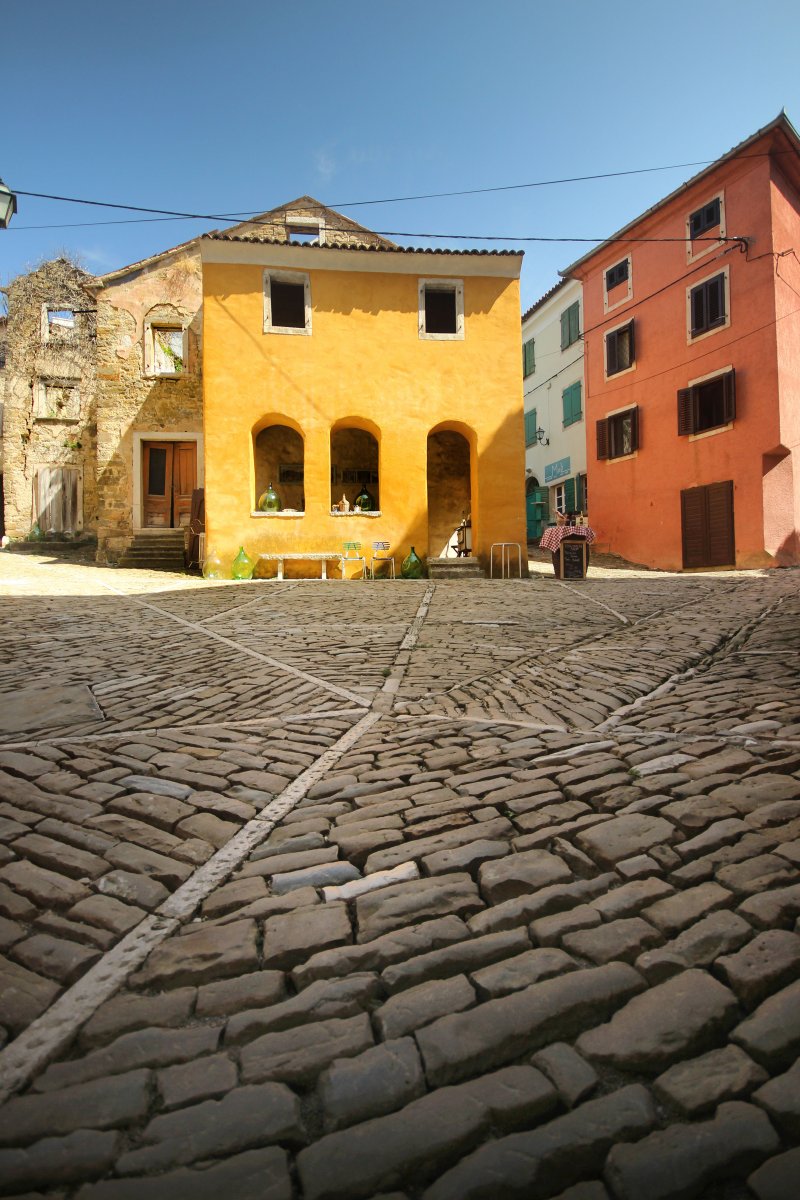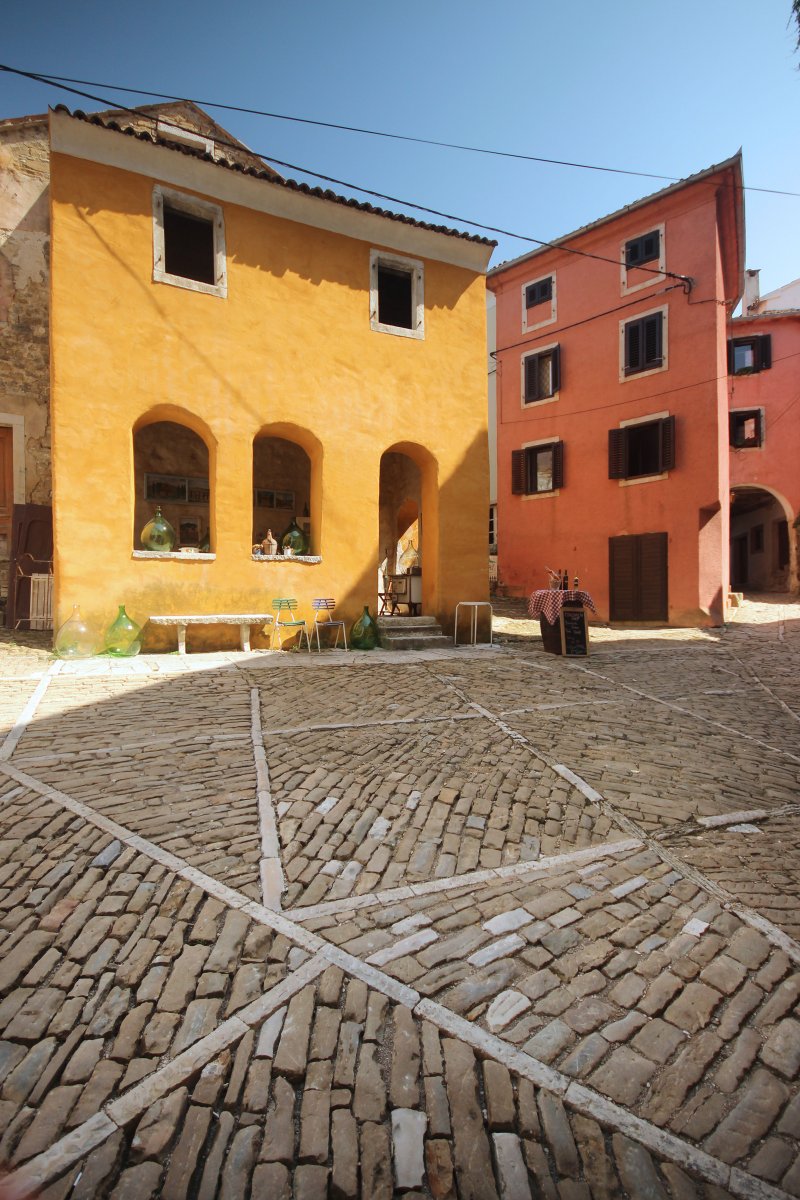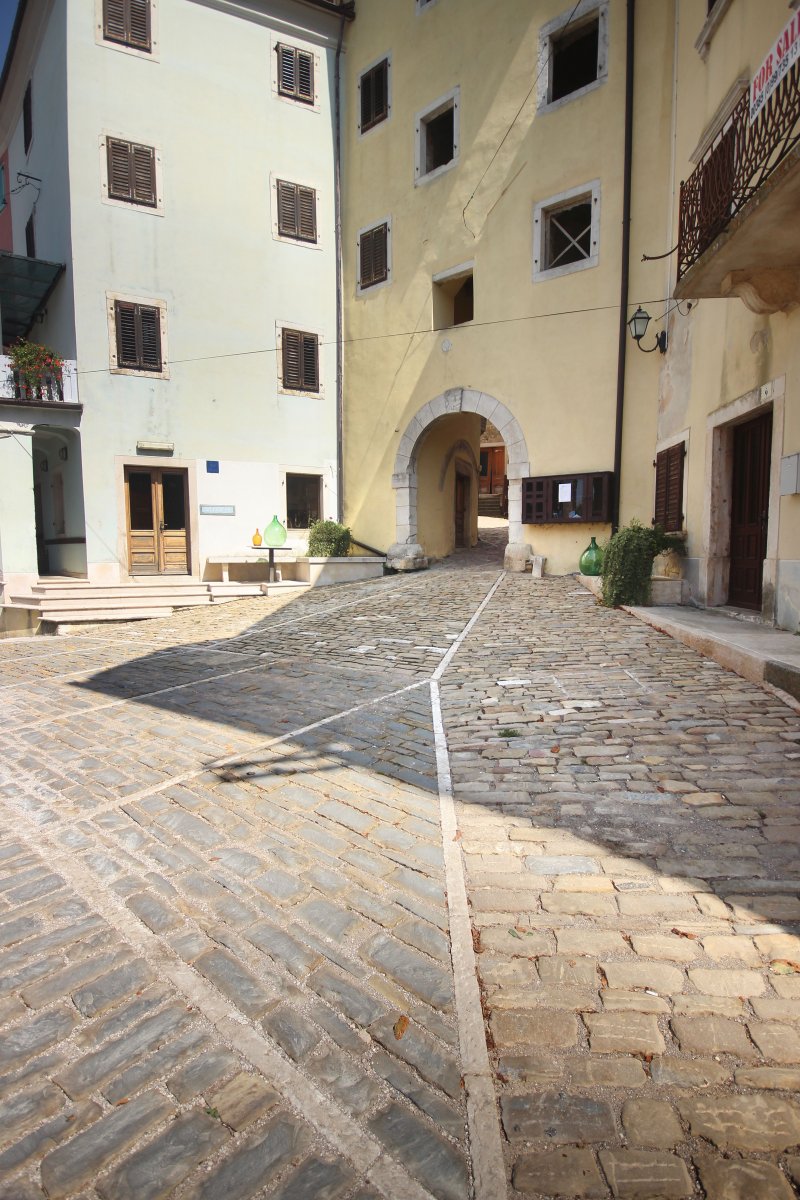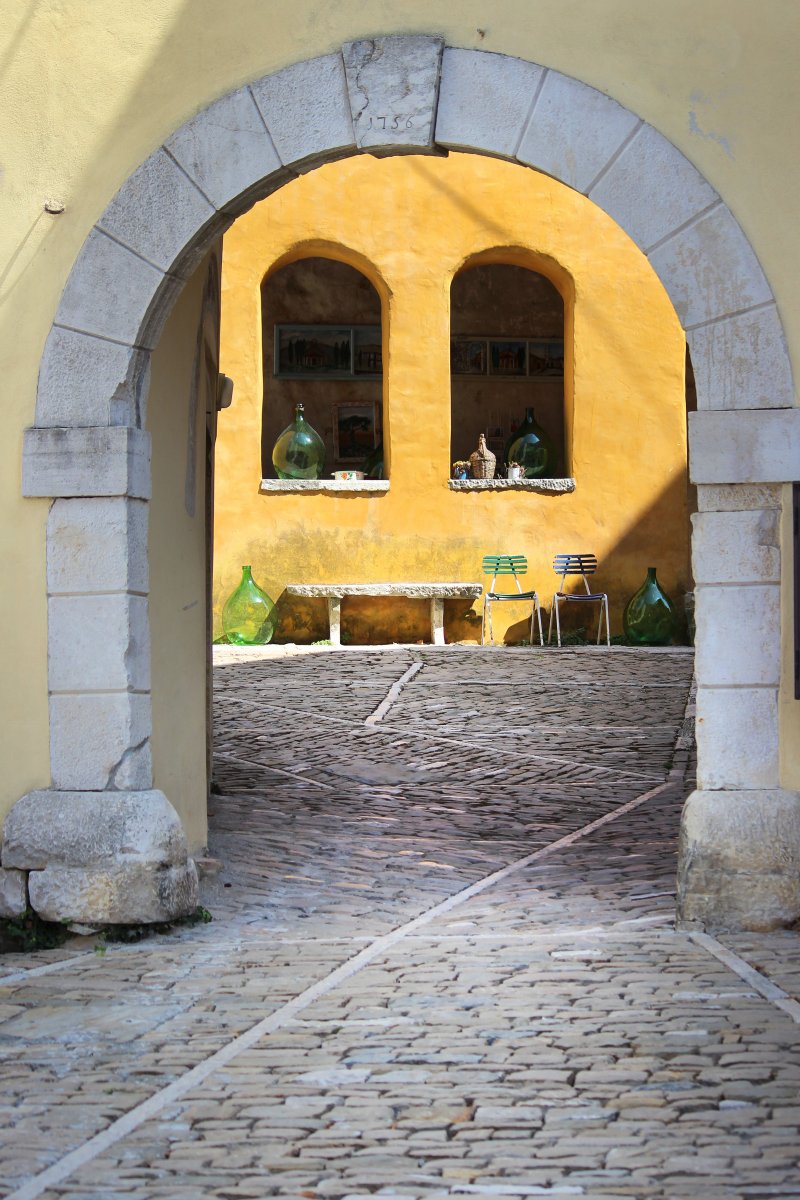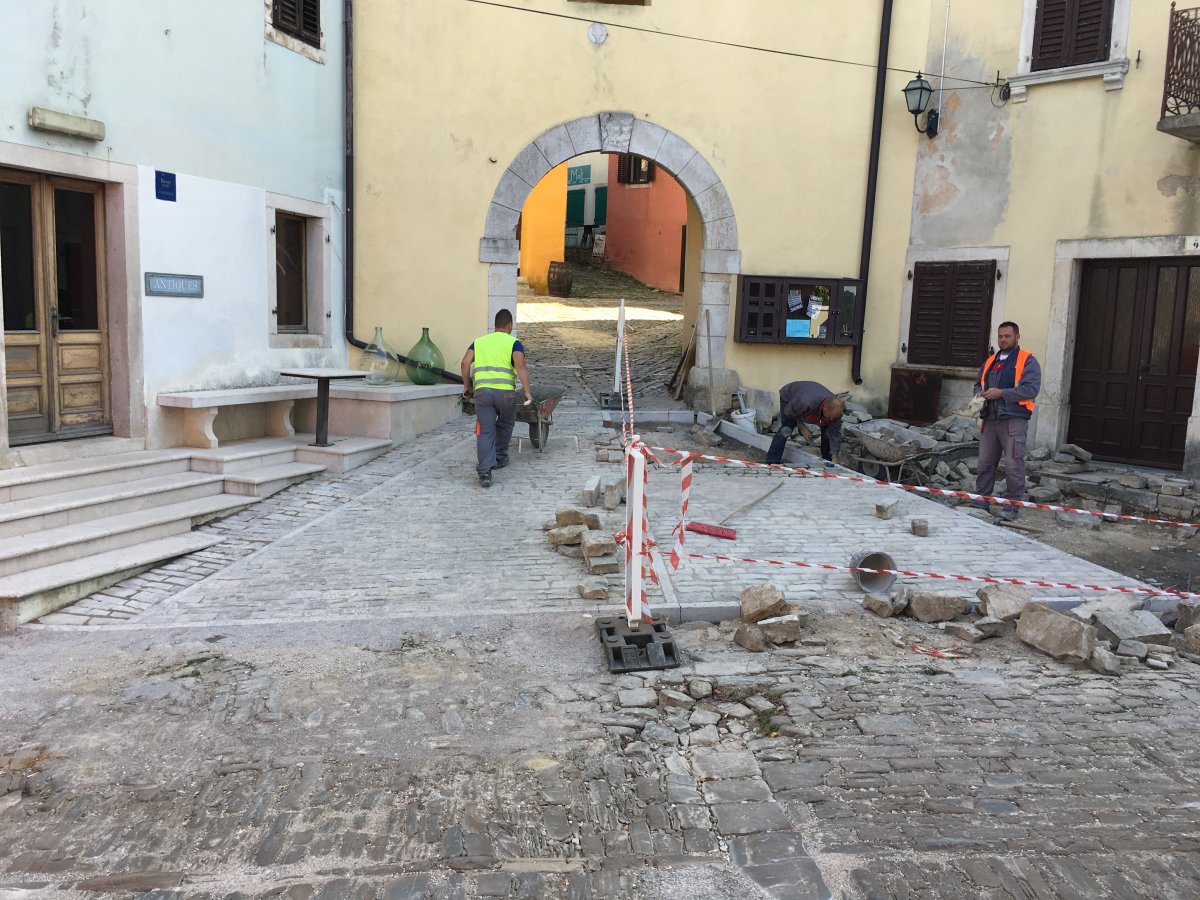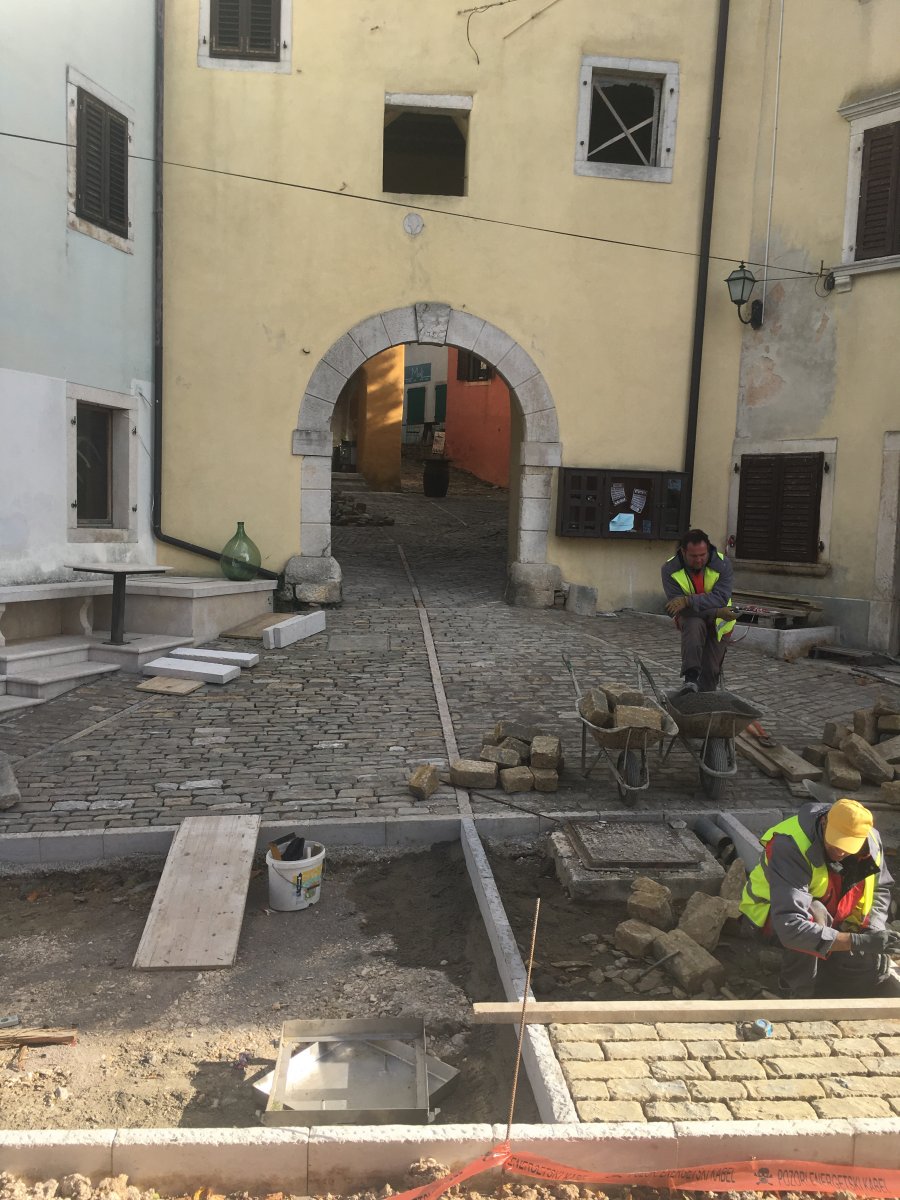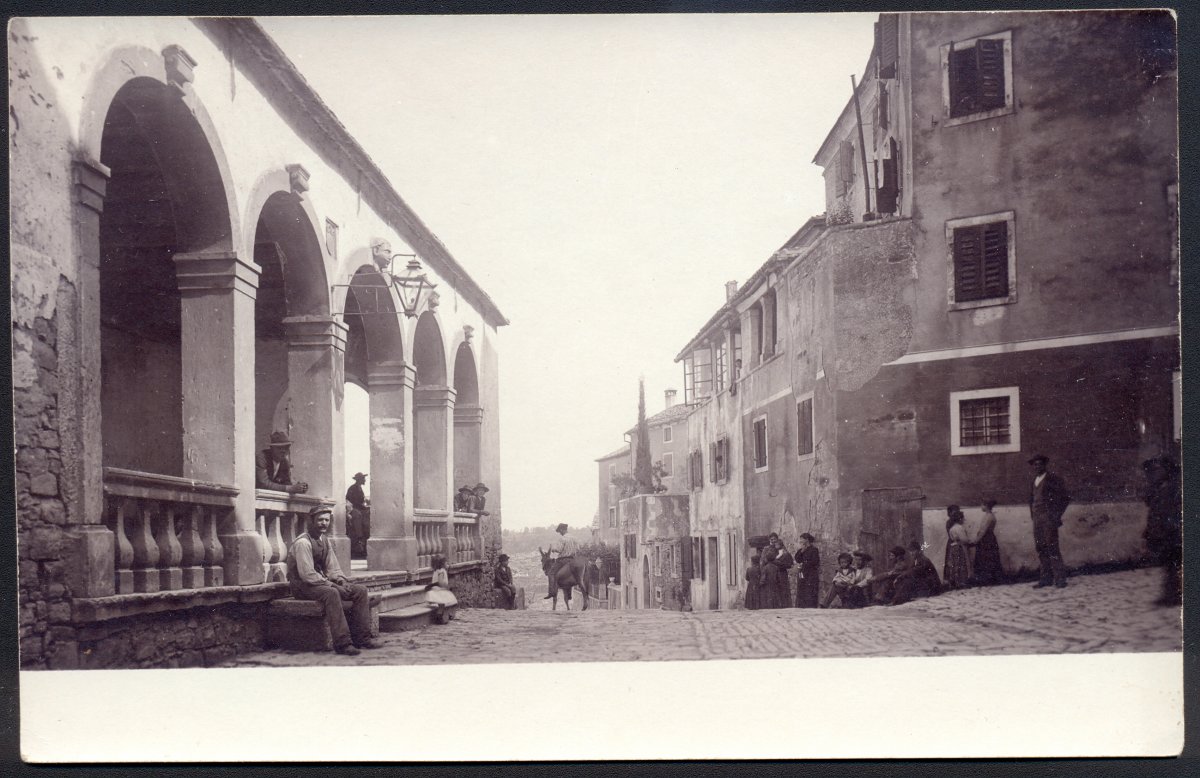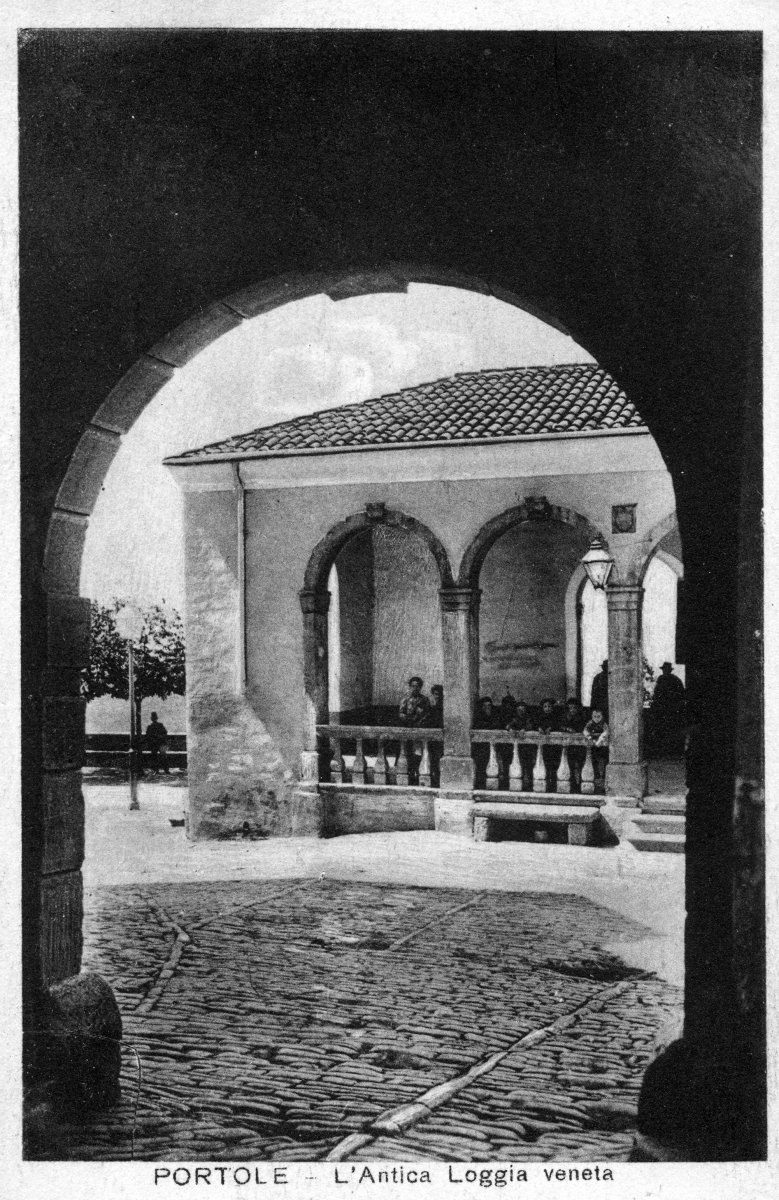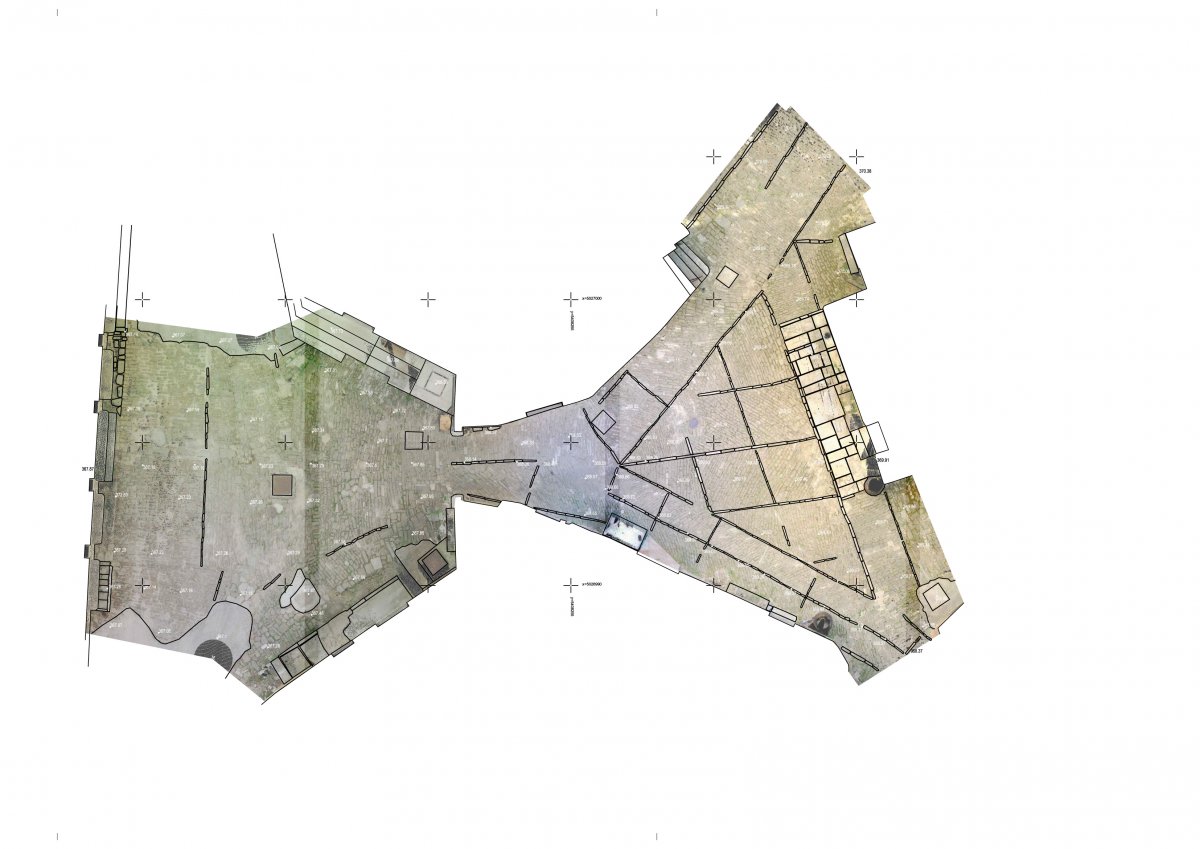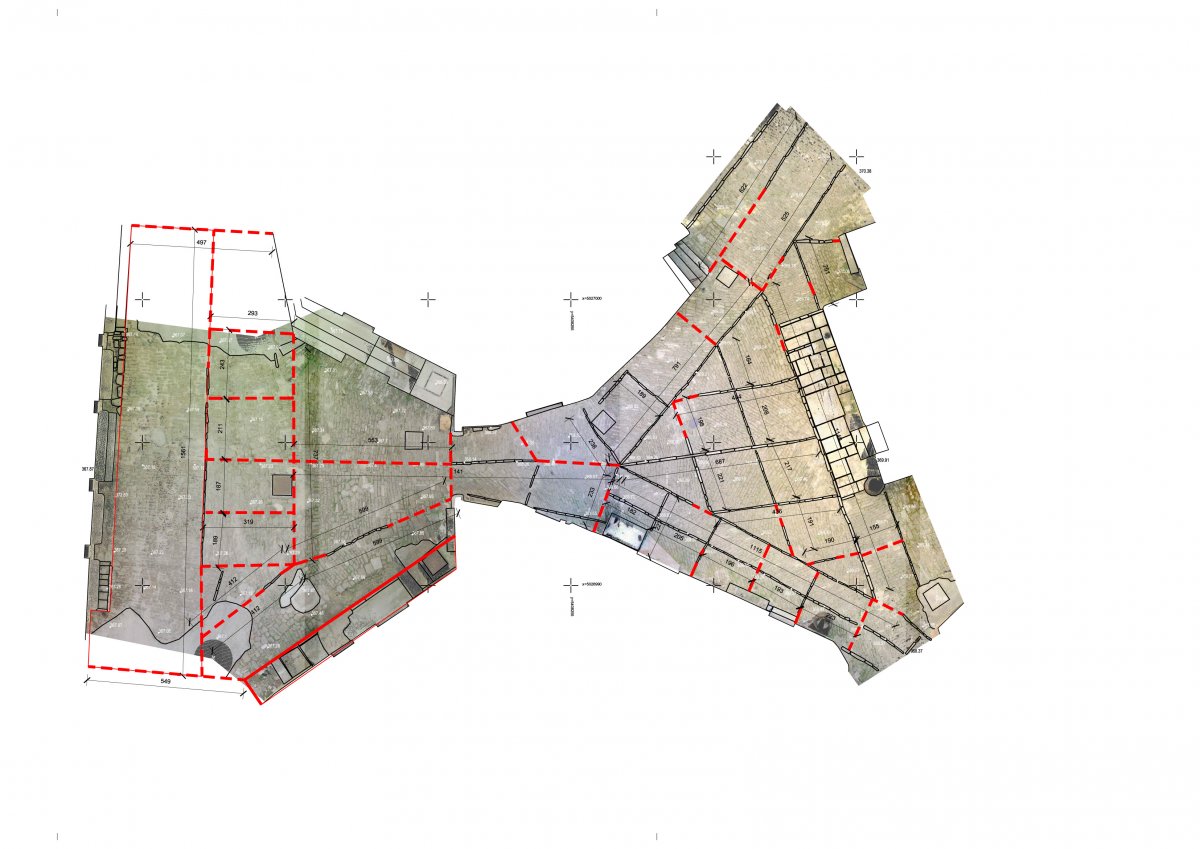Renewal of the historical Loggia Square, Oprtalj, HR
Municipality of Oprtalj – Portole ordered a renewal of the existing stone paving for two public places in the town center that now form one unit divided by the main town gate. The name of the area is the Loggia Square that stretches from the representative baroque loggia positioned outside the wall, up the hill through the town gate to the point of three streets’ junction where the old town loggia is situated. Due to several infrastructural works in the past, much of the original division of the square was lost, especially in its outer, western, part. By detecting the still existing traces in the ground and by comparing old photographs of the square, the project reconstructed the original division of the square. The study of the photo documentation confirmed that the Loggia Square has mainly part kept its original pavement from the turn of the 18th and 19th century, except for the bordering areas towards the asphalt road in front of the Loggia and certain spots where the gray stone strips have disappeared during pavement reconstructin after the works on underground infrastructure. The stone pavement restoration project is executed by the principal of facsimile or a complete renovation of the existing state. It was being achieved using already produced photometry of the existing state that contains all basic dimensions, altitudes, and the directions from documents which describe the pavement and compare present day situation with historical sources. During the dismantling of the existing pavement, all the elements were signed and categorized in order to be put at the original place with the highest accuracy possible. Restoration of the pavement was then done by putting existing elements back to their original place with the addition of adequately produced new stone elements with the same source as the existing ones. The direction of the stone pattern is different from one to another and it can be seen in reality and on photometry.
